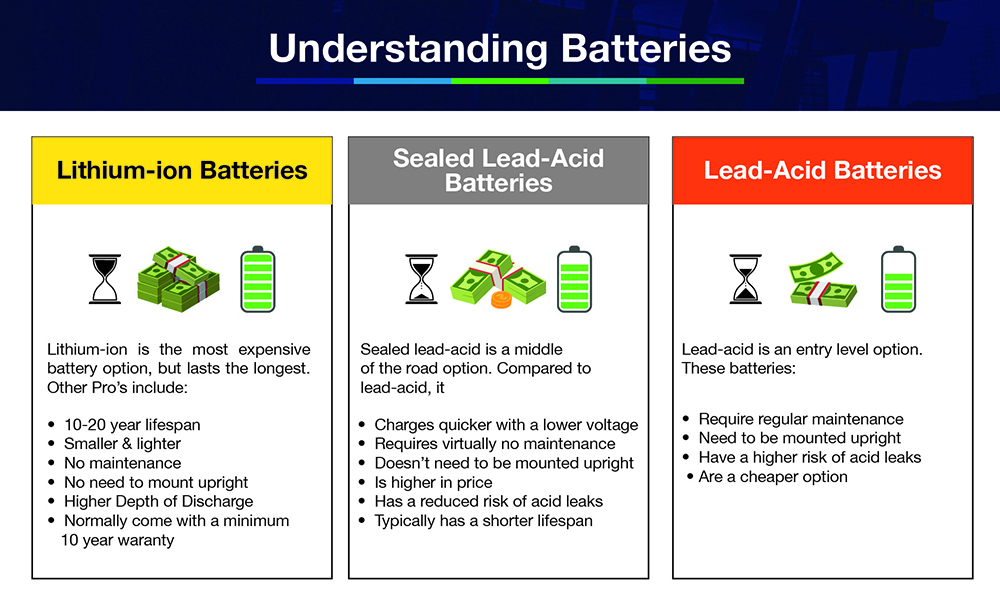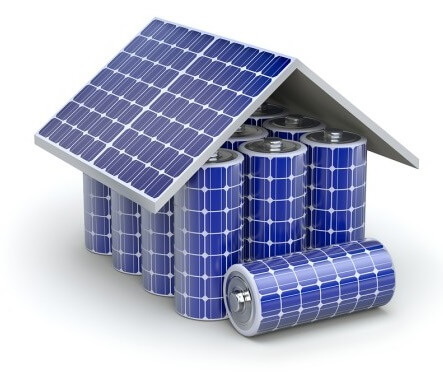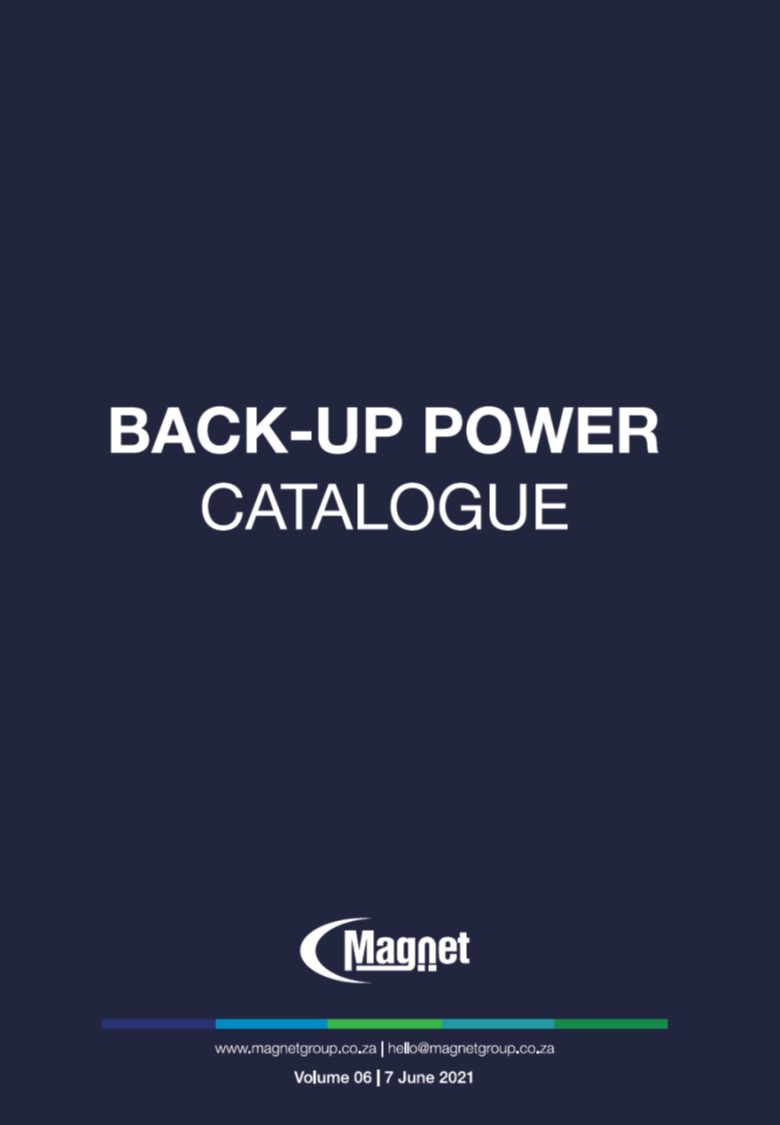If you’re considering a solar or back-up power solution for your home or facility, important factors to bear in mind are battery types and selection thereof.
In this new series, we’ll be giving you a basic understanding of the various types of batteries which could be used in solar and back-up power systems. We'll also be sharing some advice on how to choose the right battery for your system, and much more. Don't miss out, subscribe to our newsletters now!
Types of batteries
Batteries enable you to store energy, to use on demand. Solar and back-up power systems use batteries, and this is how it’s done:
1. Battery is charged when the sun is out during the day (solar energy)
2. The above is accomplished via a charger, which can either be linked to solar panels or, in some cases, the charger is built into the inverter
3. Stored power in the battery can then be used when there is no sun (in the evenings)
4. Batteries are then recharged the next day, and so forth
When it comes to electricity storage from solar power systems, there are basically two main types of battery to consider. Here’s our overview of these batteries:

Lead-Acid Batteries
This type of battery has been used for solar energy storage since the very beginning. There is a flooded lead-acid option, and its counterpart, sealed lead-acid.
Flooded Lead-Acid Batteries
Flooded lead-acid batteries comprise of cells that are submerged in a sulphuric acid solution. As such, they are also referred to as wet-cell batteries. The plates of every cell in these battery banks must be submerged at all times, so maintaining them involves the adding of distilled water every 6 to 12 months, or even as often as every month, depending on the type of lead-acid battery.
It is important to note that you should never add any fluid to these batteries other than distilled, deionized water. Batteries must be filled only to the level as recommended by the manufacturer, or else they could possibly overflow during finish-charging.
In sum, flooded lead-acid batteries are, however, the cheaper of the two options, but require regular maintenance.
Sealed Lead-Acid Batteries
An upgraded version of the flooded lead-acid battery is the sealed lead-acid. They are typically used in instances when a larger storage capacity is required.
Although sealed lead-acid batteries involve virtually no maintenance compared to its predecessor, they are not without drawbacks either. To help you understand these batteries, here’s a snapshot of their advantages and disadvantages…
Advantages of Sealed-Lead Acid Batteries:
- Require virtually no maintenance
- Charge quicker with a lower voltage
- Do not have to be mounted upright
- Reduced risk of acid leaks as they are completely sealed
Disadvantages of Sealed-Lead Acid Batteries:
- Higher in price (brand-dependent)
- Typically have a shorter lifespan.
Lithium-ion Batteries
Lithium-ion batteries are considered to be the most efficient battery type. Examine their advantages and disadvantages below to draw your own conclusion:
Advantages of Lithium-ion Batteries:
- Longevity - they typically have a life spanning from around 10-20 years
- Compact – these batteries are generally smaller and much lighter
- No maintenance – these batteries are completely maintenance free
- No need to mount upright
- Higher Depth of Discharge – typically more than 95%
- Produce up to 100% of the stored energy
Disadvantage of Lithium-ion Batteries:
- Not cheap – depending on the brand, these batteries typically carry the highest cost
What is the main difference between Lead-Acid and Lithium Ion batteries?
Depth of Discharge (DoD) refers to the percentage of the battery that has been discharged, relative to the overall capacity of the battery. For example, if you have a battery that holds 5 kilowatt-hours (kWh) of electricity, and you discharge 4kWh, the DoD is approximately 80%. The DoD depends on the type of battery you choose. A typical Lead-Acid battery option has a DoD of around 50%. A typical Lithium-ion solar battery option has a DoD of between 80%. This comes into play when calculating your solar battery needs.
Be sure to catch our next articles in the series, click here to subscribe to our newsletters!
SHOP batteries on the Magnet Store!
Need a solar or back-up power solution for your facility? Click here to contact us now!
Have you seen our Solar & Back-Up power catalogue? Simply click here to download your copy!



